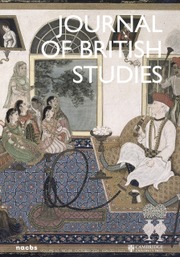Jennifer Brown, a professor of English and world literatures at Marymount Manhattan College, spent ten years researching and writing this close study of the literary evidence in England for Catherine of Siena (1337–1380; canonized 1461) in the three centuries after Catherine's death. Brown looks at these texts from many angles: translators, copyists, readers, disseminators, publishers, and intended or actual readers. She finds that in England, at least until the sixteenth century, translators and compilers downplayed Catherine's visionary and political activity in favor of her spiritual example and guidance regarding prayer, annihilation of self and conformity to the will of God.
Catherine spent her early years as a kind of recluse and caregiver to the poor. Then, inspired by her visionary experiences, she became a very public figure with a considerable familigia, or entourage. Her most pressing concerns were the return of the pope to Rome from Avignon, peace in Europe making possible a crusade in the Levant, and the reform of the church. Catherine wrote her book, the Dialogo (in Middle English, the Orcherd of Syon), shortly before her death, as well as many letters to all classes of people from popes and royalty to John Hawkwood (d. 1394), an English mercenary active in Italy.
William Flete, an English Augustinian Friar, who retired to Italy to lead an ascetic life, was one of Catherine's advisors. He wrote the Documento Spirituale (“Cleannesse of Sowle”), a summary of her teaching. Brown suggests that Flete's influence on Catherine may have shaped her spiritual teaching so that it was more suitable to English readers. The Dominican Raymond of Capua was her confessor during much of her public life and wrote her biography, the Legenda Major. One of her early followers, Stephen Maconi, who later became prior general of the Carthusian Order, wrote a letter in support of her canonization. Maconi may have promoted Catherine to the Carthusians of Sheen, an influential charterhouse near London. However, the main node for the reading, copying, and printing of works by and about Catherine in England was the Brigittine Monastery of Syon, located near Sheen. Birgitta of Sweden (1303–1373), a visionary who spent the last decades of her life in Rome, also publicly urged the return of the pope to Rome and the reform of the church. The Brigittines at Sion read Catherine and promoted her writings among lay readers.
Brown uses a number of interpretative lenses to study the surviving English texts by and about Catherine circulating in England from the late fourteenth century until the end of the seventeenth. Catherine was a woman in a church whose hierarchy was male. She needed male supporters and male scribes and interpreters. Although she seems to have exercised close control over the writing of her Dialogue and letters, she had no such control on her biographers or on those who diffused her writings in England. When Raymond of Capua wrote her life shortly after her death, he aimed to promote her canonization and the Dominican Order. This led him to deemphasize her visionary and political activities in favor of her teaching and example for Christian living. At least until the sixteenth century, English promoters of her work followed Raymond's example, because England did not have a strong tradition of visionaries, much less visionaries active in the public sphere. Also, Brown writes, Catherine herself walked a tightrope between orthodoxy and heterodoxy. In English translations and excerpts of her work, her orthodoxy was emphasized.
Catherine's claim to receive knowledge and commands immediately from God made church authorities uneasy. However, her writings, like those of her fellow visionaries Hildegard of Bingen and Birgitta of Sweden, were examined by church officials and found to be in keeping with church teaching.
The perception of Catherine in England changed after the Reformation. The Protestant martyrologist, John Foxe, tried to impale Catholics on the horns of a dilemma: either Catherine's criticism of the corruption of the church was valid, or her visions were bogus. On the other hand, the recusant author Augustine Baker recommended her writings and referred to her favorably in his own.
Brown has written a very well researched work. On the basis of twenty-one manuscript and printed excepts or complete copies of works by and about Catherine, she has constructed a plausible picture of how Catherine became known in England between 1400 and 1700, who read her and why. Her suggestion that Flete's influence on Catherine made her writings more acceptable in England is quite hypothetical; her use of the terms “orthodoxy” and “heterodoxy” seems vague, but overall this is a very fine contribution to studies of Catherine of Siena and to our understanding of late medieval Christianity in England.


